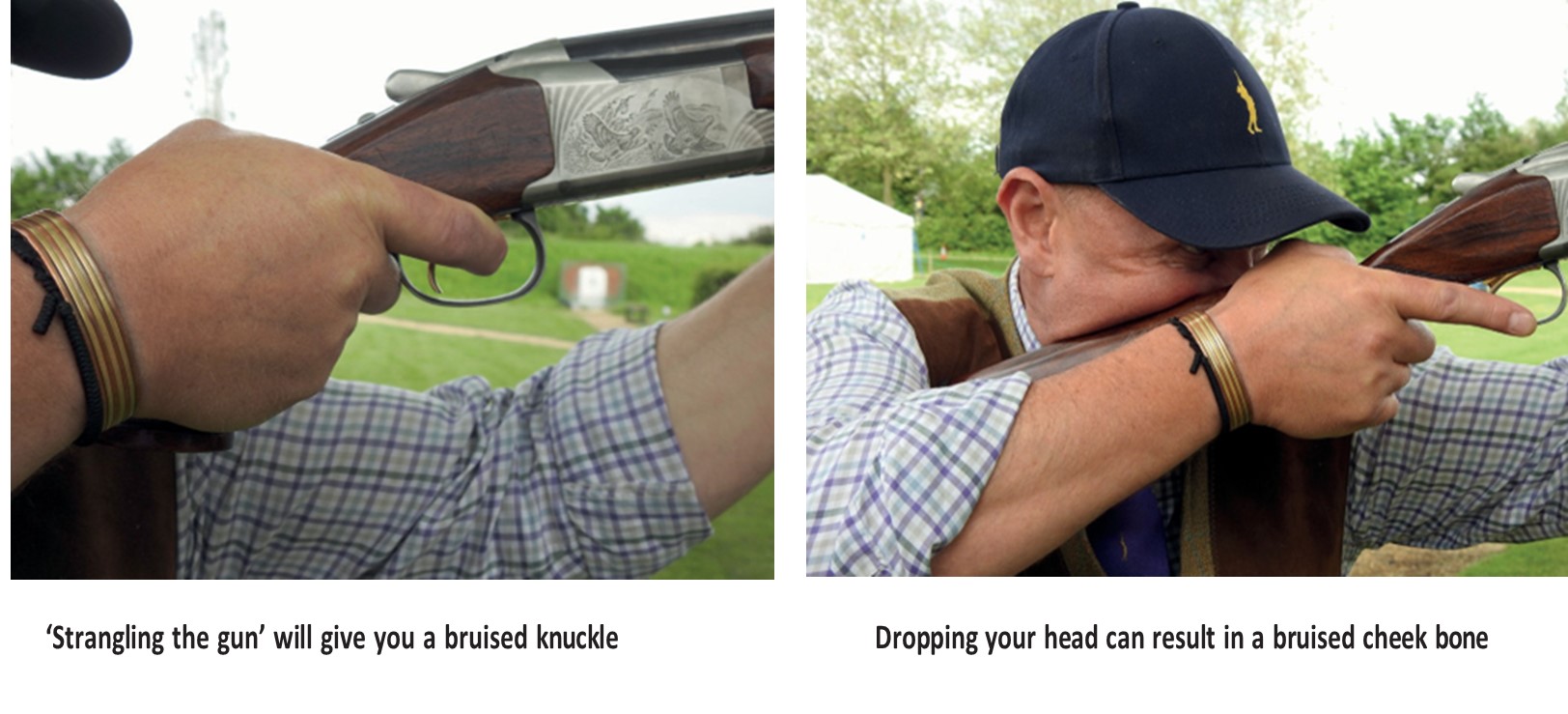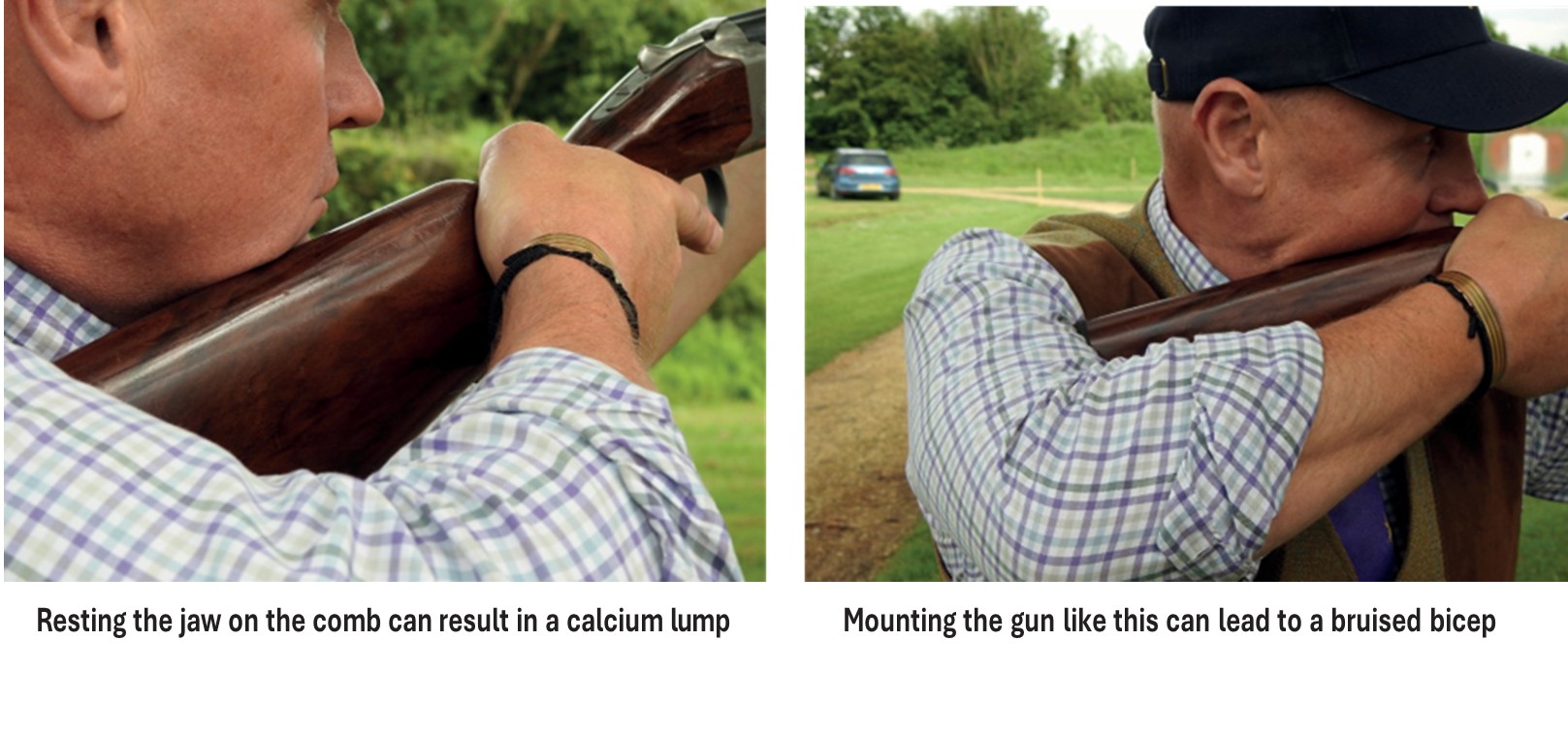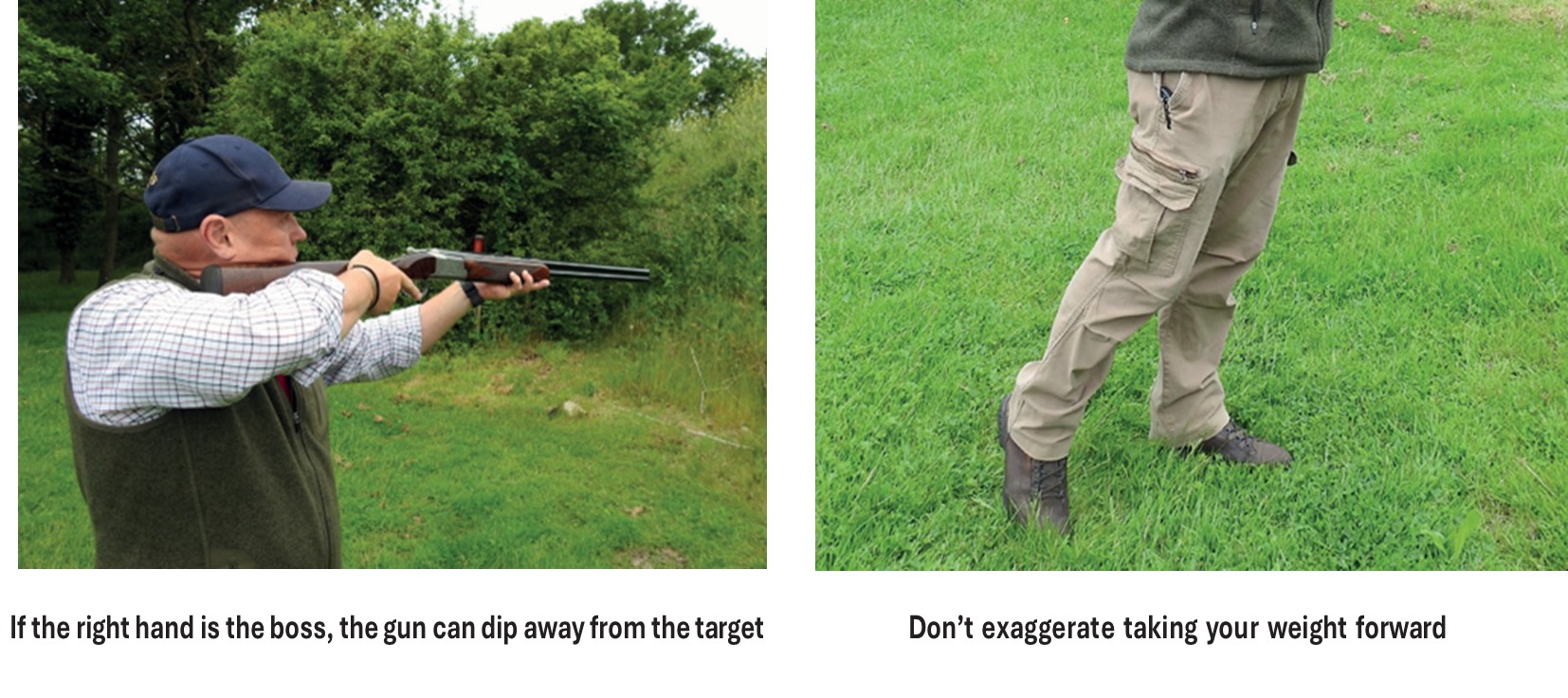In the second part of his series, Mark Heath shows how to prevent injuries and improve accuracy by mastering the fundamentals of a good gun mount
Over the course of 12 months I deliver around 1,000 lessons plus gun fittings, so I get to see and work through every form of shooting error, whether its line, timing, lead or everything together. These problems are often compounded by poor gun mount and an incorrect perception about how
to perform some or all of the above. Most can be worked through in the space of a few lessons. The upturn in performance is immediate and then it’s a question of how much time the client wants to spend and what level they want to achieve.

Quite often at the start of a lesson with a new client there will be a number of problems are immediately recognisable, and quite regularly I will ask whether their shooting is causing any injuries or pain – usually already knowing the answer. I am amazed by the number of shooters who accept bumps and bruising as part of their sport, including one who told me he thought his quite large lump on his jaw was genetic as many of his family have the same thing.
I am equally amazed when shooters who really enjoy their sport soldier on with poor performance without seeking help. “I wish I’d come to see you years ago” is always great feedback after a first lesson.
The common injuries that can occur through shooting are:
• Bruising to any part of the shoulder including the bicep on occasion;
• Bruising to the cheek bone;
• Development of a calcium lump on the jaw, which rises each time the trauma is irritated;
• Bruising and on occasions bleeding to the knuckle of the middle finger.
The main cause of all these is a poor gun mount, which can be due to several things.
Back to basics
The first thing we need to consider is how to hold the gun. An incorrect wrong hand
position, particularly the right hand, can lead to the gun being mounted to the shoulder and the cheek then being dropped onto the comb, resulting in a bruise to the cheek bone. The same hand position results in bruising and in exceptional circumstances bleeding to the knuckle of the middle finger.
This hand position is what I often refer to as strangling the gun, and is where the hand is too high and the middle finger too close to the back of the trigger guard. There can be a number of adverse consequences to this hand position. First, the cheek bruise; second, the damage to the knuckle of the middle finger (this is more likely with a side-by-side with a straight hand stock, but can also happen with an over-and-under); third, a poor trigger pull as the hand position tends to result in pulling the trigger up into the gun rather than back; and fourth, a high chance that you will miss the target, probably high, because if you mount the gun and drop your head you are likely to be looking down and the gun will therefore pointing high.
The bruising to the jaw/calcium lump type of injury is caused by mounting to the shoulder and then resting the jaw on the comb of the stock.
You can hit a target with a poor gun mount, but you are unlikely to be consistent. If the mount is messy the timing probably will be as well. If it feels like a drama, it’s probably wrong. If it feels like a work of art you’re probably on the right track.
A gun mount should be calm and unhurried. If you watch the top shooters they always look as though they have all the time in the world and still shoot the target in the same place for each shot and early when appropriate. The movement should be a single flow from start to finish rather than a two-stage process.
Shooting is the only hand eye coordination sport I can think of where for a right-handed shooter the left hand is the boss and vice versa for the left-handed shooter. For a smooth and effective mount the eyes should of course be fixed on the target. It’s a hand- eye coordination sport, not an aiming sport – but more of that in another article.

Hand follows eye
The left hand moves naturally to where you are looking, followed gently by the right hand bringing the stock calmly into the soft part of the cheek and the shoulder moving softly into the gun pretty much simultaneously. Done correctly, the stock will then naturally sit in the pocket of the
shoulder rather than on the collarbone, the bone of the shoulder or the bicep. All bits of the anatomy that take to bruising and pain exceptionally well. Having said that, I have seen some very capable shooters who mount on the bone of the shoulder and shoot exceptionally well, either being immune to pain or simply used to that position.
A common error with the gun mount is to allow the right hand to be the boss in the case of a right hander and vice versa for the left hander. This results in the barrel dipping away from the line of the target, which requires a lot of unnecessary effort to correct and recover the shot. It’s a movement at the shooting school that we colloquially refer to as ‘grave digging’.
During the mount, the weight is gently put over the body as the head comes slightly forward, so that the cheek is easily accessible to place on the comb of the gun. No exaggeration in taking the weight forward is required, we often see a shooter doing almost a ballet tip toe with the rear foot. This can lead to all sorts of problems, including overbalancing during the finish of the shot.
A good gun mount is, as you can imagine, a crucial part of good and consistent shooting. Once you have mastered the method with your instructor you can practise at home using the line where the ceiling meets the wall as the line of the target.
